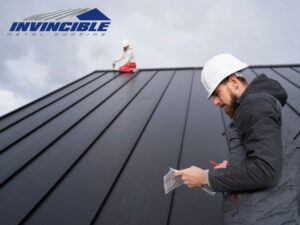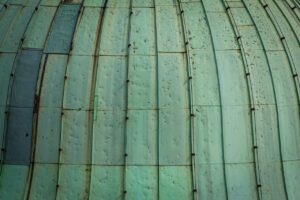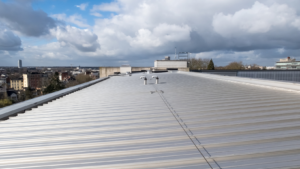6 Common Problems Of Flat Roofs in Florida
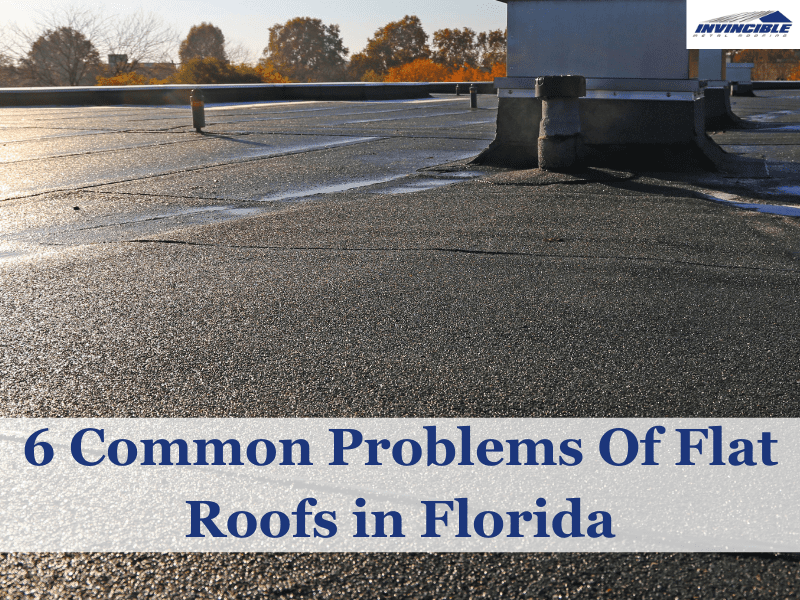
Florida, known for its sunny beaches and tropical climate, is also a place where flat roofs are increasingly popular. However, flat roofs in Florida face unique challenges. This blog post will delve into the six common problems flat roofs are known for in Florida.
One of the primary issues is the harsh weather. Florida’s intense sun, heavy rain, and occasional hurricanes put flat roofs to the test. These conditions can lead to several flat roof problems, including accelerated aging and wear. Another significant issue is water pooling. Due to Florida’s frequent downpours and flat roofs’ lack of slope, water tends to accumulate, potentially causing leaks and structural damage.
Moreover, flat roof issues in Florida also include vulnerability to wind damage, particularly during hurricane season. In this post, we will explore these challenges in detail, offering insights and solutions to homeowners. Understanding these flat roof problems is crucial for maintaining the longevity and safety of your property in Florida.
What is a Flat Roof and Why is it Used?
Flat roofs in Florida, a staple in modern architecture, offer both aesthetic and functional benefits. A flat roof is characterized by its minimal slope, making it almost level compared to traditional pitched roofs. This design choice is not just about visual appeal; it’s also about efficiency and utility.
The process of building a flat roof involves specific techniques distinct from those used in creating sloped roofs. This includes considerations for weather resistance and durability, particularly in residential flat roof construction. Homeowners are now gravitating towards this style for its sleek, modern look and the extra living space it provides atop their homes.
In roofing, a flat roof, the selection of materials is crucial to ensure longevity and proper insulation. Opting for a flat roof home can mean enjoying an expansive outdoor area for leisure or greenery. However, it’s important to note that flat roofs in Florida demand meticulous installation and regular maintenance to prevent potential water damage, underlining the importance of quality workmanship in their construction.
6 Common Problems Flat Roofs Are Known For in Florida
Flashing Problems
Flashing is a critical component of flat roofs in Florida. It involves the installation of thin pieces of waterproof material to prevent water from entering at joints or edges. However, flashing problems are common in flat roof construction. These issues arise due to poor installation, weather damage, or material deterioration over time. Faulty flashing can lead to significant flat roof leaks, resulting in water damage inside the building. Regular inspection and maintenance are necessary to ensure the flashing remains intact and functional.
Ponding Water
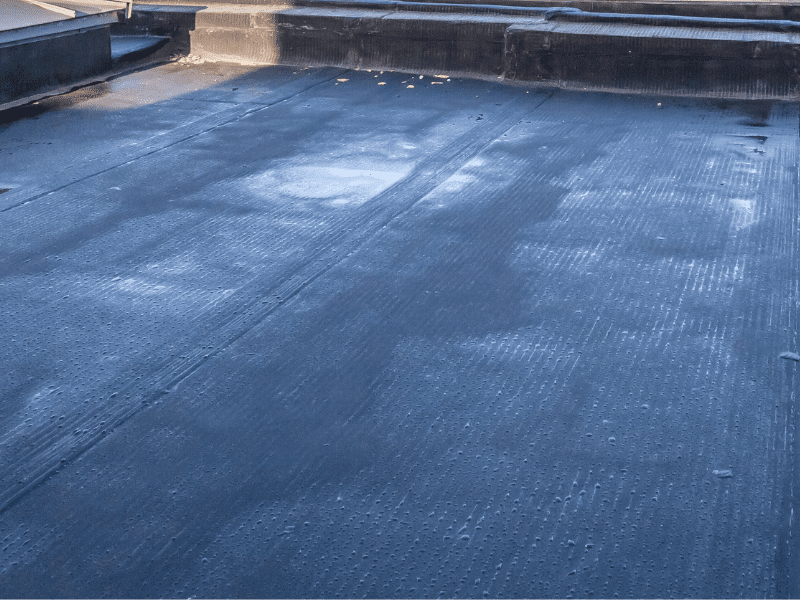
One of the most prevalent flat roof problems in Florida is ponding water. This occurs when water accumulates on the roof surface, usually due to improper drainage or leveling issues. Ponding water can lead to a host of problems, including increased pressure on the roof structure, growth of algae and mold, and eventual roof material breakdown. It’s crucial to address ponding water promptly by improving roof drainage, leveling the surface, or installing additional drains if needed.
Alligatoring
The term ‘alligatoring’ refers to a pattern of cracks on the roof surface that resembles the skin of an alligator. This issue is typically caused by the aging of the roofing material, which leads to a loss of elasticity and subsequent cracking. Alligatoring can compromise the roof’s waterproofing ability and lead to leaks. Addressing this problem usually involves applying a new coating to the roof surface, which can restore its protective properties and extend its life.
Membrane Buckling
Residential flat roof construction often involves the use of membrane roofing materials. In Florida, these membranes can sometimes buckle due to temperature fluctuations and humidity. Membrane buckling is a concern as it can compromise the roof’s integrity, leading to leaks and reduced lifespan.
To address this issue, it is crucial to ensure proper installation and regular inspection of the roofing membrane. In some cases, the installation of a new membrane might be necessary.
Punctures and/or Leaks
Punctures and leaks are perhaps the most straightforward problems flat roofs face but can be the most damaging if not addressed promptly. Foot traffic, falling objects, or even wildlife can cause punctures in the roofing material. These damages can lead to flat roof leaks, which might not be immediately noticeable but can cause significant internal damage over time.
Routine inspection is key in identifying potential punctures. Small punctures can often be repaired with a patch, while larger damages might require more extensive repairs. Implementing regular maintenance schedules and limiting access to the roof can significantly reduce the risk of punctures and leaks.
Blistering
Blistering is another problem commonly seen in flat roofs in Florida. It occurs when pockets of air or moisture get trapped within the layers of the roof. These blisters can expand and contract with temperature changes, eventually leading to breaks in the roofing material. Blistering is often a sign of poor installation or inadequate ventilation. While small blisters might not immediately affect the roof’s performance, they can grow and lead to more significant issues, including flat roof leaks and membrane failure.
To prevent blistering, ensure that the roof is properly installed with adequate ventilation. If blisters are present, it’s important to have them evaluated by
a professional to determine if repairs or a full replacement are necessary. Choosing a reputable roofing contractor in Florida and high-quality materials for your flat roof is essential to avoid this issue.
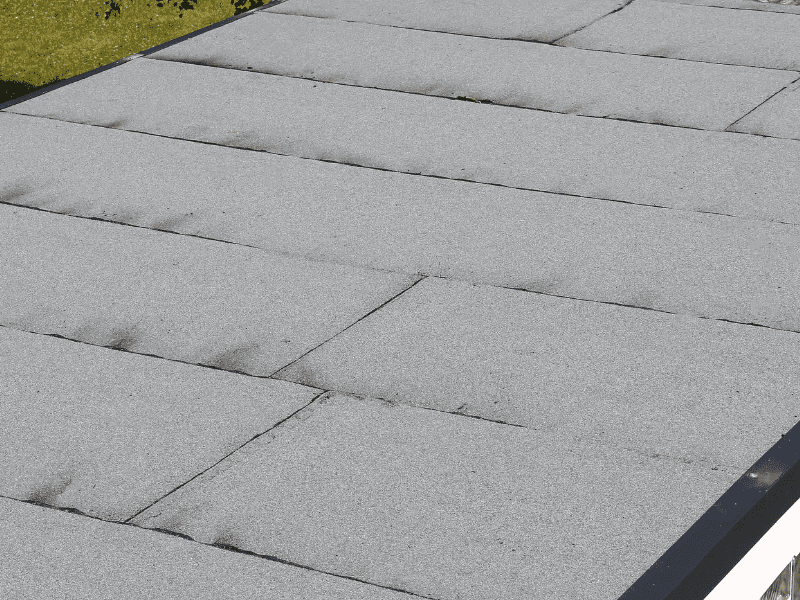
Conclusion
Flat roofs in Florida face a unique set of challenges, primarily due to the state’s humid climate and frequent storms. Among the 6 common problems these roofs are known for, issues like water pooling, UV damage, and thermal movement top the list. Homeowners with flat roof homes often struggle with accelerated wear and tear, which can lead to leaks and structural damage if not addressed promptly.
The key to effectively roofing a flat roof in Florida lies in understanding these specific challenges and employing preventative measures. Regular maintenance, quality materials, and professional installation are crucial in combating flat roof issues. By being proactive and knowledgeable about the potential problems, homeowners can ensure that their flat roofs withstand the test of time and the elements. Remember, while flat roofs may be prone to certain issues, with the right care and attention, they can be a durable and practical choice for many Florida homes.
Invincible Metal Roofing stands out as a premier and reliable roofing company in Miami, Florida, specializing in exceptional flat roofing services. Our team of roofers in Miami is exceptionally skilled and experienced in flat roof installation, repair, and replacement, ensuring that your roof is managed with utmost proficiency. Contact us today for any flat roofing solutions in Miami, Florida.
Frequently Asked Question
Can you put shingles on a flat roof?
Shingles are generally not recommended for flat roofs, as they require a slope for proper water drainage. Flat roofs typically use materials like modified bitumen, rubber, or TPO which are better suited for water-proofing and handling standing water. Shingles on a flat roof could lead to water damage and leaks.
Why do they put rocks on roofs?
Rocks, or ballast, are placed on flat roofs primarily to hold down and protect the underlying roofing material, like a rubber membrane, from wind and UV damage. They also provide a layer of insulation, reduce surface temperature fluctuations, and aid in water drainage, extending the roof’s lifespan.
Flat roofs can experience specific problems such as water pooling, leaks, and structural strain. These flat roof problems are often due to inadequate drainage, weather exposure, and material degradation. Regular maintenance is crucial to mitigate these issues and ensure the longevity and functionality of flat roofing systems.
How long does a flat roof last in Florida?
A Florida flat roof typically lasts between 10 to 50 years, depending on the material and maintenance. In Florida’s harsh climate, factors like intense sun, heavy rains, and humidity affect the durability of flat roofs. Regular inspections and upkeep are essential for maximizing the lifespan of flat roofs in Florida.
What is the weakness of flat roof?
The primary weakness of a flat roof is its susceptibility to water pooling and leakage. Without a steep slope for water runoff, flat roofs can retain moisture, leading to potential water damage and deterioration. This issue necessitates meticulous installation, effective drainage systems, and regular maintenance to prevent long-term problems.
Flat roof leaks commonly occur due to poor drainage, leading to water pooling. Over time, this stagnation breaks down roofing materials, causing leaks. Inadequate sealing at joints and flashing, along with weather damage, also contribute to flat roof leaks. Regular inspection and maintenance are key to preventing these issues.
What are the common defects of roofing?
Common roofing defects include leaks, missing or damaged shingles, poor flashing installation, and inadequate ventilation. Over time, roofs can also suffer from moss and algae growth, water pooling, and structural damage due to weather exposure. Regular inspections and maintenance are crucial to identify and address these issues promptly.

